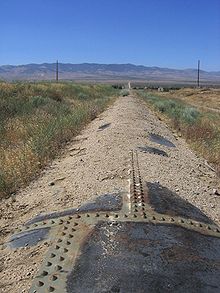Pipelines and geopolitics
Pipelines for major energy resources (petroleum and natural gas) are not merely an element of trade. They connect to issues of geopolitics and international security as well, and the construction, placement, and control of oil and gas pipelines often figure prominently in state interests and actions. A notable example of pipeline politics occurred at the beginning of the year 2009, wherein a dispute between Russia and Ukraine ostensibly over pricing led to a major political crisis. Russian state-owned gas company Gazprom cut off natural gas supplies to Ukraine after talks between it and the Ukrainian government fell through. In addition to cutting off supplies to Ukraine, Russian gas flowing through Ukraine—which included nearly all supplies to Southeastern Europe and some supplies to Central and Western Europe—was cut off, creating a major crisis in several countries heavily dependent on Russian gas as fuel. Russia was accused of using the dispute as leverage in its attempt to keep other powers, and particularly the European Union, from interfering in its "near abroad".Oil and gas pipelines also figure prominently in the politics of Central Asia and the Caucasus.
Hazard identification
Because the solvent fraction of dilbit typically comprises volatile aromatics like naptha and benzene, reasonably rapid carrier vaporization can be expected to follow an above-ground spill—ostensibly enabling timely intervention by leaving only a viscous residue that is slow to migrate. Effective protocols to minimize exposure to petrochemical vapours are well-established, and oil spilled from the pipeline would be unlikely to reach the aquifer unless incomplete remediation were followed by the introduction of another carrier (e.g. a series of torrential downpours).The introduction of benzene and other volatile organic compounds (collectively BTEX) to the subterranean environment compounds the threat posed by a pipeline leak. Particularly if followed by rain, a pipeline breach would result in BTEX dissolution and equilibration of benzene in water, followed by percolation of the admixture into the aquifer. Benzene can cause many health problems and is carcinogenic with EPA Maximum Contaminant Level (MCL) set at 5 μg/L for potable water.[39] Although it is not well studied, single benzene exposure events have been linked to acute carcinogenesis.[40] Additionally, the exposure of livestock, mainly cattle, to benzene has been shown to cause many health issues, such as neurotoxicity, fetal damage and fatal poisoning.[41]
The entire surface of an above-ground pipeline can be directly examined for material breach. Pooled petroleum is unambiguous, readily spotted, and indicates the location of required repairs. Because the effectiveness of remote inspection is limited by the cost of monitoring equipment, gaps between sensors, and data that requires interpretation, small leaks in buried pipe can sometimes go undetected
Pipeline developers do not always prioritize effective surveillance against leaks. Buried pipes draw fewer complaints. They are insulated from extremes in ambient temperature, they are shielded from ultraviolet rays, and they are less exposed to photodegradation. Buried pipes are isolated from airborne debris, electrical storms, tornadoes, hurricanes, hail, and acid rain. They are protected from nesting birds, rutting mammals, and wayward buckshot. Buried pipe is less vulnerable to accident damage (e.g. automobile collisions) and less accessible to vandals, saboteurs, and terrorists.




